
|
Astronomy Picture Of the Day (APOD)
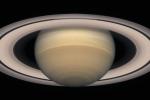 Saturn: Lord of the Rings
Saturn: Lord of the Rings
17.01.2004
Born in 1564, Galileo used a telescope to explore the Solar System. In 1610, he became the first to be amazed by Saturn's rings, After nearly 400 years, Saturn's magnificent rings still offer one of the most stunning astronomical sights.
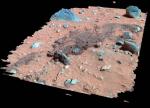 Martian Surface in Perspective
Martian Surface in Perspective
16.01.2004
Spirit moved across Mars yesterday as the rover successfully maneuvered down off its lander, driving its six wheels onto the floor of Gusev crater. As planned, the robotic geologist will now begin a close-up examination of the rocks and soil around the landing site for clues to the processes that formed them.
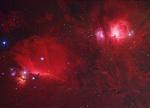 An Orion Deep Field
An Orion Deep Field
15.01.2004
Adrift 1,500 light-years away in one of the night sky's most recognizable constellations, the glowing Orion Nebula and the dark Horsehead Nebula are contrasting cosmic vistas. They both appear in this stunning composite digital image assembled from over 20 hours of data that includes exposures filtered to record emission from hydrogen atoms.
14.01.2004
If you could stand on Mars -- what would you see? Scrolling right will reveal a full color 360-degree panoramic view from NASA's Spirit Rover that landed on Mars just 10 days ago. The image is a digital mosaic from the panoramic camera that shows the view in every direction.
13.01.2004
The Apollo 15 mission to Earth's Moon was dedicated to better understanding the surface of the moon by exploring mountains, valleys, maria, and highlands. Astronauts David Scott and James Irwin spent nearly three days on the Moon while Alfred Worden orbited above in the Command Module.
 A Hole Punch Cloud Over Alabama
A Hole Punch Cloud Over Alabama
12.01.2004
What could create a huge hole the clouds? Such a hole, likely hundreds of meters across, was photographed last month from a driveway near Mobile, Alabama, USA. Very unusual to see, hole-punch clouds like this are still the topic of meteorological speculation. A leading hypothesis holds that the hole-punch cloud is caused by falling ice-crystals.
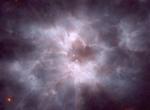 NGC 2440: Cocoon of a New White Dwarf
NGC 2440: Cocoon of a New White Dwarf
11.01.2004
Like a butterfly, a white dwarf star begins its life by casting off a cocoon that enclosed its former self. In this analogy, however, the Sun would be a caterpillar and the ejected shell of gas would become the prettiest of all!
 Two Worlds, One Sun
Two Worlds, One Sun
10.01.2004
Two Worlds, One Sun, is the legend emblazoned on the Spirit rover's camera calibration target. Resting on the rover's rear deck, it also doubles as a sundial, allowing students to determine the solar time at Spirit's landing site on Mars.
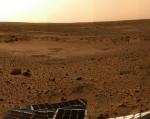 Sol 5 Postcard from Mars
Sol 5 Postcard from Mars
9.01.2004
A martian Sol - the average martian solar day - is about 39 minutes longer than Earth's familiar 24 hour day. Operating on martian time, the Spirit rover recently sent back this color postcard image, recorded on Sol 5 of its stay on the martian surface.
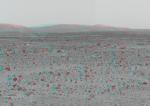 The Hills of Mars
The Hills of Mars
8.01.2004
Distant hills rise above a rocky, windswept plain in this sharp stereo scene from the Spirit rover on Mars. When viewed with red/blue glasses, the picture combines left and right images from Spirit's high resolution panoramic camera to yield a dramatic 3D perspective.
|
January February March April May June July August September October November December |
||||||||||||||||||||||||||||||||||||||||||||||||||||||||